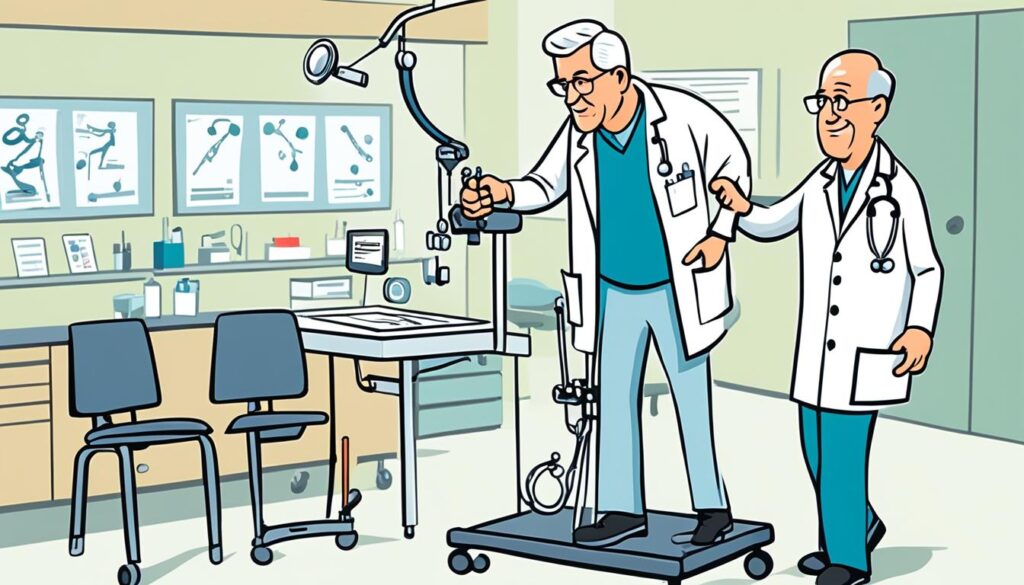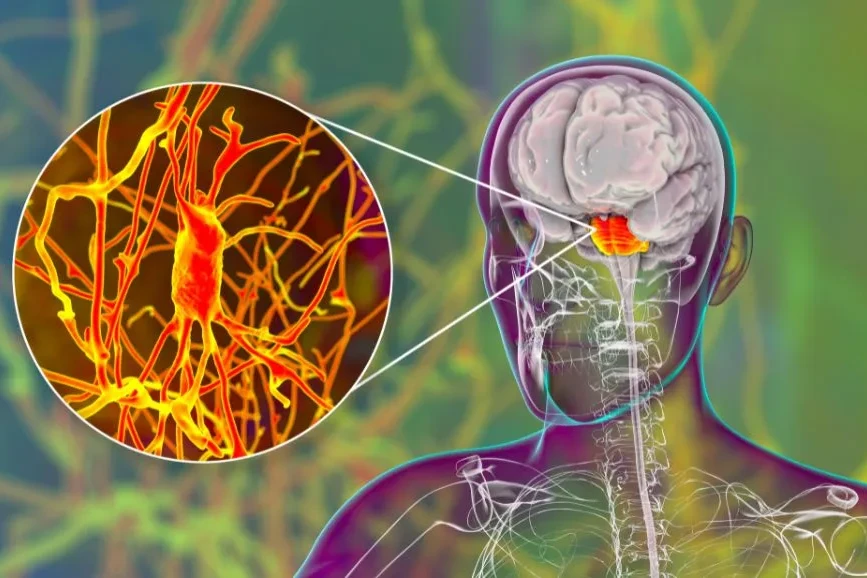If you or a loved one are experiencing difficulty walking, balance problems, or changes in speech, you may be dealing with adult ataxia. Ataxia is a condition that affects muscle control and coordination, leading to various neurological challenges. It can significantly impact your daily life and overall health management.
Early recognition and understanding of ataxia symptoms in adults are crucial for prompt medical intervention and appropriate care. This article will provide insights into the common signs and symptoms of ataxia, its underlying causes, and the importance of seeking medical attention. We will also explore the diagnosis, evaluation, treatment, and management strategies that can help improve your quality of life.
Whether you are personally affected by ataxia or seeking information for a loved one, this article will provide valuable insights into managing the challenges posed by this condition. By understanding the symptoms and exploring effective management strategies, you can take proactive steps towards maintaining your neurological health and overall well-being.
Table of Contents
ToggleCauses of Ataxia
Ataxia primarily occurs due to damage to the cerebellum or its connections in the brain. The causes of ataxia can be categorized into three major groups: acquired, degenerative, and hereditary.
Acquired causes:
- Long-term excess alcohol use
- Certain medications (such as sedatives and anti-seizure drugs)
- Heavy metal poisoning
- Vitamin deficiencies
- Thyroid conditions
- Stroke
- Multiple sclerosis
- Autoimmune diseases
- Infections (such as chickenpox and COVID-19)
- Paraneoplastic syndromes triggered by cancerous tumors
- Changes in the brain (abscess or tumor)
- Head trauma
- Cerebral palsy
Degenerative causes:
- Multiple system atrophy
Hereditary causes:
Hereditary ataxia results from genetic conditions that are passed down in families. Various gene changes can cause different types of ataxia, and most types tend to worsen over time.
Symptoms of Ataxia
Ataxia symptoms can vary depending on the individual and the underlying cause, but they generally involve poor coordination and motor control. Common symptoms of ataxia include:
- Difficulties with balance
- Unsteady or wide-based walking
- Poor coordination of hand movements
- Slurred speech
- Uncontrollable eye movements
- Trouble swallowing
These symptoms can impact daily activities, such as eating, writing, and buttoning a shirt.

It is important to note that the symptoms of ataxia may resemble those of other conditions, so it is crucial to consult a healthcare professional for a proper diagnosis.
| Symptom | Description |
|---|---|
| Poor coordination | Difficulty in controlling movements |
| Balance problems | Unsteadiness while standing or walking |
| Changes in speech | Slurred or slow speech patterns |
When to Seek Medical Attention
If you experience symptoms such as loss of balance, muscle coordination issues in the hands, arms, or legs, difficulty walking, slurred speech, or trouble swallowing, it is important to see a healthcare professional for a proper evaluation. Seeking early medical attention is crucial to determine the cause of your symptoms and develop an appropriate treatment plan. Prompt intervention can significantly impact the progression and management of ataxia, improving your quality of life.
Common symptoms of ataxia include:
- Loss of balance
- Muscle coordination issues in the hands, arms, or legs
- Difficulty walking
- Slurred speech
- Trouble swallowing
If you experience any of these symptoms without a pre-existing condition that causes ataxia, it is recommended to consult with a doctor. They will conduct a thorough assessment and may refer you to a specialist, such as a neurologist, for further evaluation.
Ataxia can be caused by various factors, including genetic conditions, acquired causes, or other underlying health issues. Identifying the underlying cause is vital to determine the most appropriate management strategies and provide necessary support.
Remember, early medical intervention is key to effectively managing ataxia. Don’t hesitate to make an appointment with a healthcare professional if you experience any concerning symptoms.
Diagnosis and Evaluation of Ataxia
The diagnosis of ataxia involves a thorough evaluation of your medical history, family history, and a comprehensive neurological and physical examination. Your healthcare professional will gather information about your symptoms, their progression, and any potential triggers or underlying conditions. This medical history assessment provides valuable insights into the possible causes of ataxia.

Following the medical history review, a neurological examination will be conducted to assess your coordination, muscle strength, reflexes, and sensory function. This examination helps identify specific neurological abnormalities associated with ataxia and determine the areas of your brain or nervous system that may be affected.
In addition to the examination, your healthcare professional may order diagnostic tests to aid in the diagnosis of ataxia. These tests can help rule out other conditions that may cause similar symptoms or identify potential underlying causes. Some common diagnostic tests include:
- Blood and urine studies: These tests can provide information about your overall health, check for specific genetic markers or infections, and assess for any metabolic or hormonal imbalances that may contribute to your symptoms.
- Genetic testing: Genetic tests can help identify specific gene mutations associated with hereditary ataxias. They can also assist in determining if you have a genetic predisposition to develop ataxia.
- Brain imaging scans: Magnetic resonance imaging (MRI) scans may be performed to visualize your brain and identify any structural abnormalities, such as cerebellar atrophy or lesions, which may be causing your ataxia symptoms.
| Diagnostic Tests for Ataxia | Purpose |
|---|---|
| Blood and urine studies | To assess overall health, check for genetic markers, infections, and metabolic imbalances. |
| Genetic testing | To identify specific gene mutations associated with hereditary ataxias or genetic predisposition. |
| Brain imaging scans (MRI) | To visualize the brain and identify structural abnormalities, such as cerebellar atrophy or lesions. |
The combination of the medical history, neurological examination, and diagnostic tests plays a crucial role in accurately diagnosing ataxia. These evaluations help healthcare professionals understand the underlying cause of your symptoms and determine the most appropriate treatment and management strategies for your specific condition.
Treatment and Management of Ataxia
The treatment and management of ataxia depend on the underlying cause, as there is currently no cure for hereditary ataxias. However, various strategies can help manage the symptoms and improve the quality of life for individuals with ataxia.
Adaptive devices such as walkers or canes can assist with mobility and provide support for individuals with balance difficulties.
Physical therapy plays a crucial role in improving muscle strength and coordination. It involves exercises and techniques that aim to enhance motor control and minimize the impact of ataxia on daily activities.
Speech therapy is essential for addressing speech and swallowing difficulties that may arise from ataxia. Therapists work with individuals to improve speech clarity, swallowing function, and overall communication skills.
- Adaptive devices like walkers or canes
- Physical therapy to improve muscle strength and coordination
- Speech therapy to address speech and swallowing difficulties
- Regular exercise to maintain overall health
Additionally, regular exercise is essential for individuals with ataxia, as it aids in maintaining overall health and well-being. Engaging in physical activities that are suitable for each individual’s capabilities can promote strength, balance, and coordination.
In certain cases, medications may be prescribed to alleviate specific symptoms associated with ataxia, such as tremors or stiffness. However, these medications are typically symptom-specific and may vary depending on individual needs. It’s important to consult with healthcare professionals for proper evaluation and medication management.
Overall, a personalized treatment plan that incorporates adaptive devices, physical therapy, speech therapy, regular exercise, and potentially medication can help individuals with ataxia manage their symptoms effectively and maintain an active and fulfilling lifestyle.
Complications of Ataxia
Ataxia can lead to various complications, particularly if not properly managed or treated. It’s important to be aware of these complications and take appropriate measures to reduce their impact on your daily life. Some common complications of ataxia include:
- Falls and injuries: Impaired balance and coordination can increase the risk of falls, which can result in fractures, head injuries, or other serious injuries. It’s important to take precautions to prevent falls, such as using assistive devices and making your home environment safer.
- Respiratory difficulties: Ataxia can affect the muscles involved in breathing, leading to respiratory issues. This can include shortness of breath, difficulty in clearing secretions, or even respiratory failure in severe cases. If you experience any respiratory symptoms, it’s crucial to seek medical attention promptly.
- Pressure sores: Prolonged immobility and difficulty in changing positions can increase the risk of developing pressure sores, also known as bedsores. These are areas of damaged skin and underlying tissue caused by constant pressure. Proper positioning, regular movement, and good skincare can help prevent pressure sores.
- Infections: Immobility and respiratory difficulties can also increase the risk of infections, such as pneumonia or urinary tract infections. It’s important to practice good hygiene and maintain a healthy lifestyle to minimize the risk of infections.
- Blood clots: Reduced mobility and muscle function can increase the risk of blood clots, especially deep vein thrombosis (DVT). Blood clots can be life-threatening if they travel to vital organs, such as the lungs (pulmonary embolism). Staying active, maintaining good circulation, and following your healthcare professional’s advice can help prevent blood clots.
- Cognitive or behavioral changes: In some cases, ataxia can result in cognitive or behavioral changes, such as difficulties with memory, concentration, or mood disturbances. These changes can significantly impact your daily life and overall well-being. Seeking appropriate support and care from healthcare professionals can help manage these challenges.
It’s important to remember that everyone’s experience with ataxia is unique, and the complications may vary. Regular medical follow-ups and adherence to management strategies are essential in reducing the risk of these complications and maintaining optimal health. By actively addressing these complications and working closely with your healthcare team, you can enhance your quality of life and minimize the impact of ataxia on your day-to-day activities.

Variability in Ataxia Progression
The progression of ataxia can vary significantly depending on the underlying cause. Understanding the different patterns of progression is crucial in accurately diagnosing and managing this condition.
Acute Onset
Ataxia can have an acute onset, meaning it occurs suddenly and progresses rapidly. Acute onset ataxia can be triggered by factors such as stroke, infectious or parainfectious cerebellitis, or acute toxin exposure. In these cases, individuals may experience a sudden onset of symptoms and notice a rapid decline in their motor function.
Rapid Progression
In some cases, ataxia may progress rapidly over a short period of time, typically spanning hours to days. This type of progression can be associated with certain immune-mediated disorders or metabolic derangements. The rapid decline in motor control and coordination can significantly impact an individual’s daily life.
Chronic Progression
On the other hand, ataxia can exhibit a chronic and indolent progression over a longer duration, ranging from months to years. This type of progression is commonly observed in genetic ataxias, sporadic neurodegenerative disorders like multiple system atrophy, or idiopathic late-onset cerebellar ataxia. The symptoms gradually worsen over time, affecting motor function and overall quality of life.
Having an understanding of the rate and tempo of progression is essential in guiding the diagnosis and management of ataxia. It allows healthcare professionals to develop a personalized treatment plan tailored to the individual’s specific needs and prognosis.
| Progression Type | Characteristics | Underlying Causes |
|---|---|---|
| Acute Onset | Sudden and rapid progression | Stroke, infectious or parainfectious cerebellitis, acute toxin exposure |
| Rapid Progression | Fast decline over hours to days | Immune-mediated disorders, metabolic derangements |
| Chronic Progression | Slow and gradual worsening over months to years | Genetic ataxias, sporadic neurodegenerative disorders, idiopathic late-onset cerebellar ataxia |
Evaluation and Diagnostic Tests for Ataxia
The evaluation of ataxia involves a combination of clinical assessment and diagnostic tests. Alongside a thorough history and physical examination, healthcare professionals may order brain magnetic resonance imaging (MRI) to assess for structural lesions and atrophy in the cerebellum and brainstem. Serum tests, including blood chemistries, genetic testing, and specific lab markers, may help identify underlying causes or rule out other conditions. Cerebrospinal fluid studies can provide valuable information in cases of paraneoplastic, immune-mediated, infectious, or inflammatory disorders affecting the nervous system. Additional testing, such as CT scans or PET scans to investigate occult malignancy, may be recommended based on the individual presentation.
Evaluation and Diagnostic Tests for Ataxia
To diagnose ataxia, healthcare professionals employ various evaluation and diagnostic tests to gather comprehensive information. These tests aid in identifying potential underlying causes, ruling out other conditions, and assessing the extent of damage in the brain.
The evaluation process begins with a thorough clinical assessment, including a detailed medical history and physical examination. This provides important insights into the onset, progression, and severity of symptoms.
Brain Magnetic Resonance Imaging (MRI): MRI scans are commonly used to assess the structural integrity of the cerebellum and brainstem. By detecting any lesions, atrophy, or abnormalities in these regions, MRI helps in diagnosing ataxia and identifying the specific areas of neurological damage.
| Diagnostic Tests | Purpose |
|---|---|
| Serum Testing | Includes blood chemistries, genetic testing, and specific lab markers to identify underlying causes or rule out other conditions. |
| Cerebrospinal Fluid Studies | Used to examine cerebrospinal fluid for signs of paraneoplastic, immune-mediated, infectious, or inflammatory disorders affecting the nervous system. |
| Additional Testing | In certain cases, CT scans or PET scans may be recommended to investigate the presence of hidden malignancies that may be contributing to ataxia. |
These diagnostic tests play a crucial role in confirming the diagnosis of ataxia and determining its underlying cause. They provide valuable information that helps healthcare professionals develop an effective treatment plan and identify any relevant associated conditions or complications.

By utilizing a combination of evaluation techniques and diagnostic tests, medical professionals can accurately diagnose ataxia and provide appropriate treatment and management strategies tailored to each individual’s specific needs.
Genetic Ataxias
A significant subset of ataxias is attributed to genetic factors. Genetic ataxias occur due to inherited defects in specific genes. These can be passed down through families in various inheritance patterns, including autosomal dominant (AD), autosomal recessive (AR), or X-linked. Depending on the specific mutation, genetic ataxias can manifest in different forms and have varying rates of progression.
Spinocerebellar ataxias (SCAs) are the most common autosomal dominant genetic ataxias, while Friedreich ataxia and ataxia-telangiectasia are examples of autosomal recessive genetic ataxias. Genetic testing can aid in confirming a diagnosis and provide insights into prognosis and potential treatment options.
Management and Prognosis of Ataxia
While there is no cure for many forms of ataxia, effective management strategies can greatly improve symptoms and enhance overall quality of life. The primary goal of managing ataxia is to optimize functional abilities and maintain independence. A multidisciplinary approach is often employed, involving various healthcare professionals who specialize in different aspects of rehabilitation.
One key aspect of managing ataxia is physical therapy, which focuses on improving muscle strength, coordination, and balance. Physical therapists design personalized exercise programs that target specific areas of weakness and work towards enhancing mobility. Occupational therapy is also beneficial, as it focuses on improving fine motor skills and helping individuals adapt to their daily activities.
Speech therapy plays a crucial role in managing ataxia-related speech and swallowing difficulties. Speech therapists help individuals improve their articulation, voice control, and swallowing function through targeted exercises and techniques.
In addition to therapy, the use of adaptive devices can significantly enhance mobility and independence for individuals with ataxia. Walkers, canes, and assistive devices for daily activities, such as buttoning shirts or eating utensils, can make a substantial difference in daily life.
A comprehensive management plan for ataxia requires regular follow-up appointments to monitor the progression of the condition and make necessary adjustments to the treatment strategies. It is essential to work closely with healthcare professionals to ensure that the management plan remains effective and aligned with the individual’s evolving needs.
The prognosis and outcomes of ataxia can vary depending on the underlying cause. Some forms of ataxia progress slowly over many years, allowing individuals to maintain a relatively high level of functional ability. However, other forms may lead to more rapid functional decline and greater disability.
It is important to note that while the progression of ataxia cannot be halted, supportive care can greatly improve the overall quality of life. Regular monitoring, comprehensive symptom management, and emotional support are essential components of long-term management.
Treatment strategies for ataxia
| Treatment | Description |
|---|---|
| Physical Therapy | Focuses on improving muscle strength, coordination, and balance through tailored exercise programs. |
| Occupational Therapy | Helps individuals adapt to daily activities and improve fine motor skills. |
| Speech Therapy | Aims to improve speech articulation, voice control, and swallowing function. |
| Use of Adaptive Devices | Assistive devices such as walkers, canes, and adaptive tools for daily tasks can enhance mobility and independence. |
Although ataxia can present challenges, with proper management and support, individuals can live fulfilling lives and maintain their independence for as long as possible.
Conclusion
Understanding the symptoms of ataxia is essential for effective management and improving the quality of life for individuals facing this condition. Ataxia can manifest differently based on various underlying causes, which can include genetic conditions, acquired factors, and degenerative disorders. Early recognition and intervention are crucial in providing timely support and maximizing overall well-being.
While there is currently no cure for ataxia, there are strategies available to help alleviate symptoms and enhance independence. Physical therapy and the use of adaptive devices can assist in improving muscle control and mobility. Additionally, a comprehensive evaluation, accurate diagnosis, and personalized treatment plan are fundamental in managing ataxia effectively.
Regular follow-up appointments and consistent communication with healthcare professionals are vital for ongoing support and monitoring the progression of the condition. By establishing a collaborative relationship with your healthcare team, you can navigate the challenges of ataxia more confidently and optimize your well-being.
FAQ
What is ataxia?
Ataxia is a condition characterized by poor muscle control that affects various aspects of daily life, such as walking, balance, hand coordination, speech, and swallowing.
What are the causes of ataxia?
Ataxia can be caused by a variety of factors, including genetic conditions, stroke, tumors, multiple sclerosis, degenerative diseases, alcohol misuse, certain medicines, and even COVID-19.
What are the symptoms of ataxia?
Symptoms of ataxia can include poor coordination, unsteady walking, balance problems, difficulty with fine motor tasks, changes in speech, uncontrollable eye movements, and trouble swallowing.
When should I seek medical attention for ataxia?
If you experience symptoms such as loss of balance, muscle coordination problems in the hands, arms, or legs, difficulty walking, slurred speech, or trouble swallowing, it is important to see a healthcare professional as soon as possible.
How is ataxia diagnosed and evaluated?
The diagnosis of ataxia involves a thorough medical history, family history, and a comprehensive neurological and physical examination. Diagnostic tests, such as blood and urine studies, genetic testing, and brain imaging scans, may also be ordered.
What treatments are available for ataxia?
The treatment and management of ataxia depend on the underlying cause and may include the use of adaptive devices, physical therapy, speech therapy, and medications to alleviate specific symptoms.
What are the complications of ataxia?
Complications of ataxia can include falls and injuries, respiratory difficulties, pressure sores, infections, blood clots, and cognitive or behavioral changes.
How does ataxia progress?
The progression of ataxia can vary depending on the underlying cause, with some types progressing rapidly and others progressing slowly over time.
What evaluation and diagnostic tests are used for ataxia?
The evaluation of ataxia involves a combination of clinical assessment and diagnostic tests, such as brain imaging scans, serum tests, and cerebrospinal fluid studies.
What are genetic ataxias?
Genetic ataxias occur due to inherited defects in specific genes and can be passed down through families in various inheritance patterns.
How is ataxia managed, and what is the prognosis?
While there is no cure for many forms of ataxia, management strategies can help improve symptoms and overall quality of life. Prognosis and outcomes can vary depending on the underlying cause of ataxia.
About The Author

This article is medically reviewed by Dr. Chandril Chugh, Board-Certified Neurologist, providing expert insights and reliable health information.
Dr. Chandril Chugh is a U.S.-trained neurologist with over a decade of experience. Known for his compassionate care, he specializes in treating neurological conditions such as migraines, epilepsy, and Parkinson’s disease. Dr. Chugh is highly regarded for his patient-centered approach and dedication to providing personalized care.
→ Book a consultation to discover which remedies suit your needs best.




